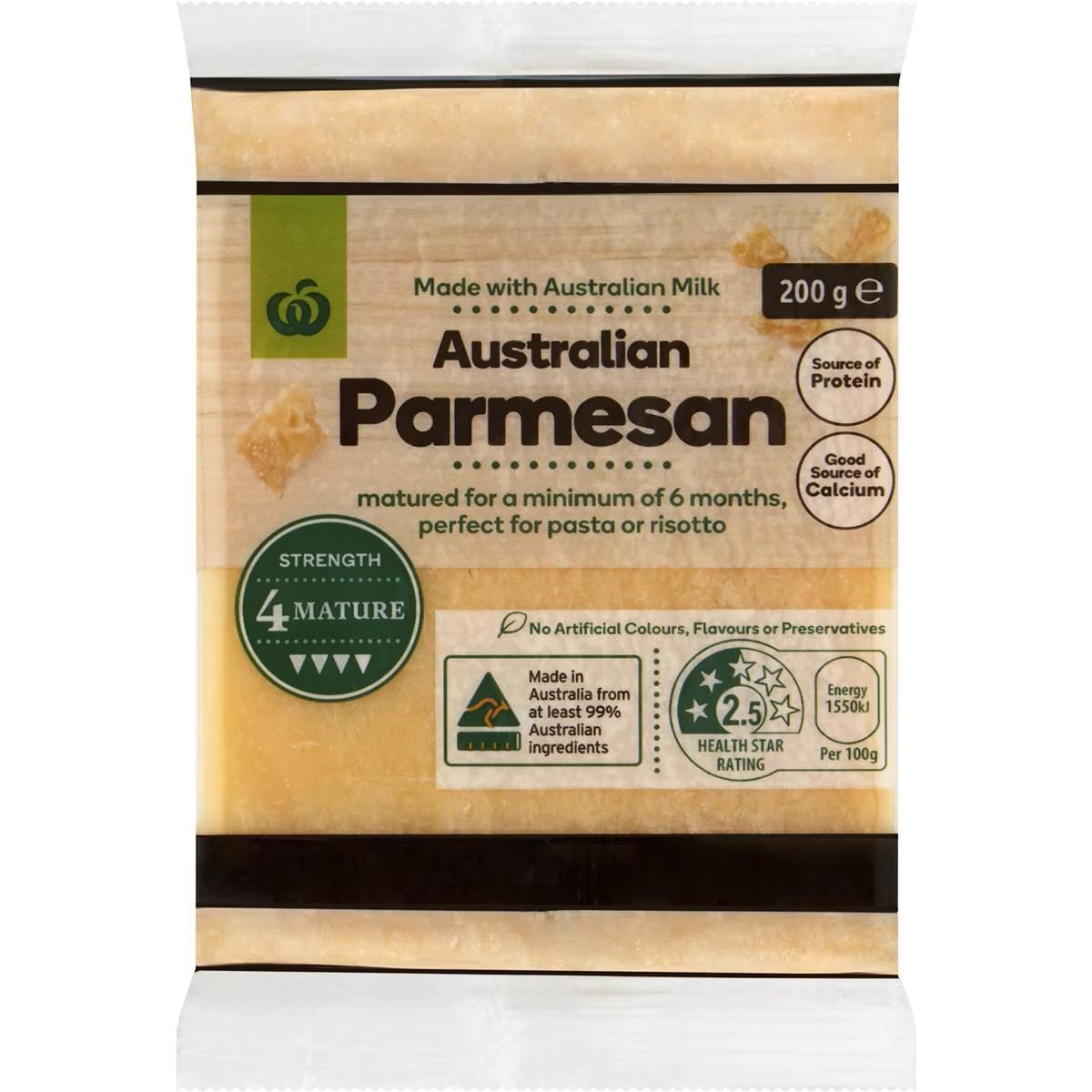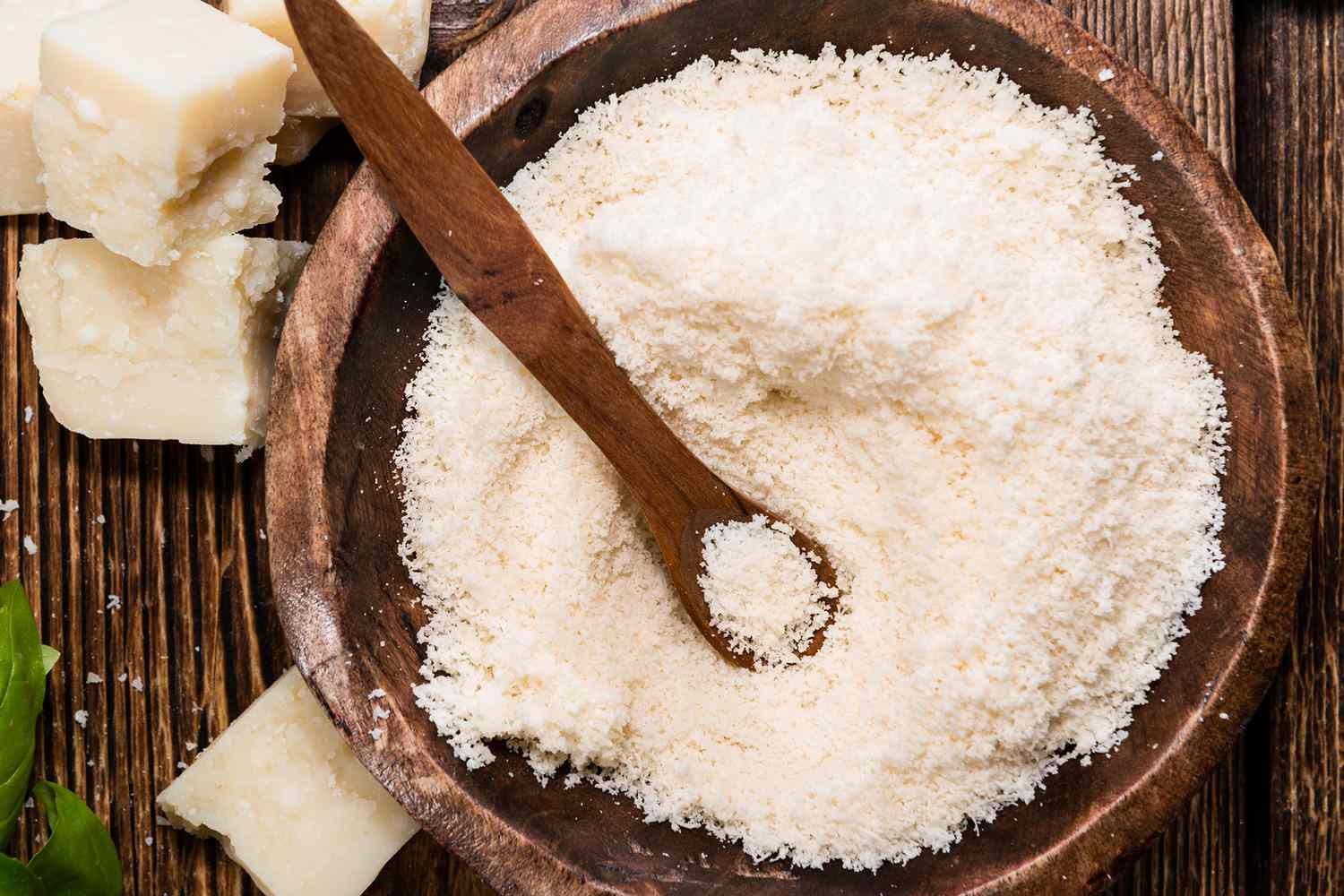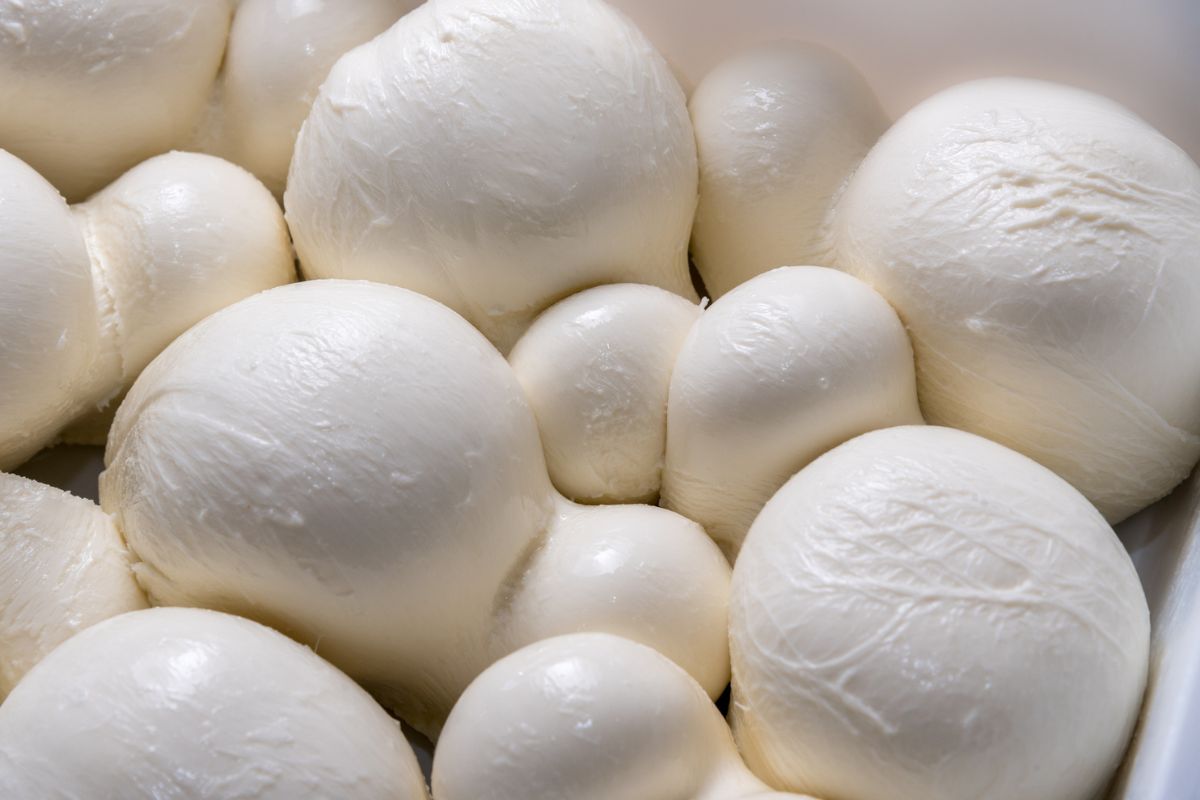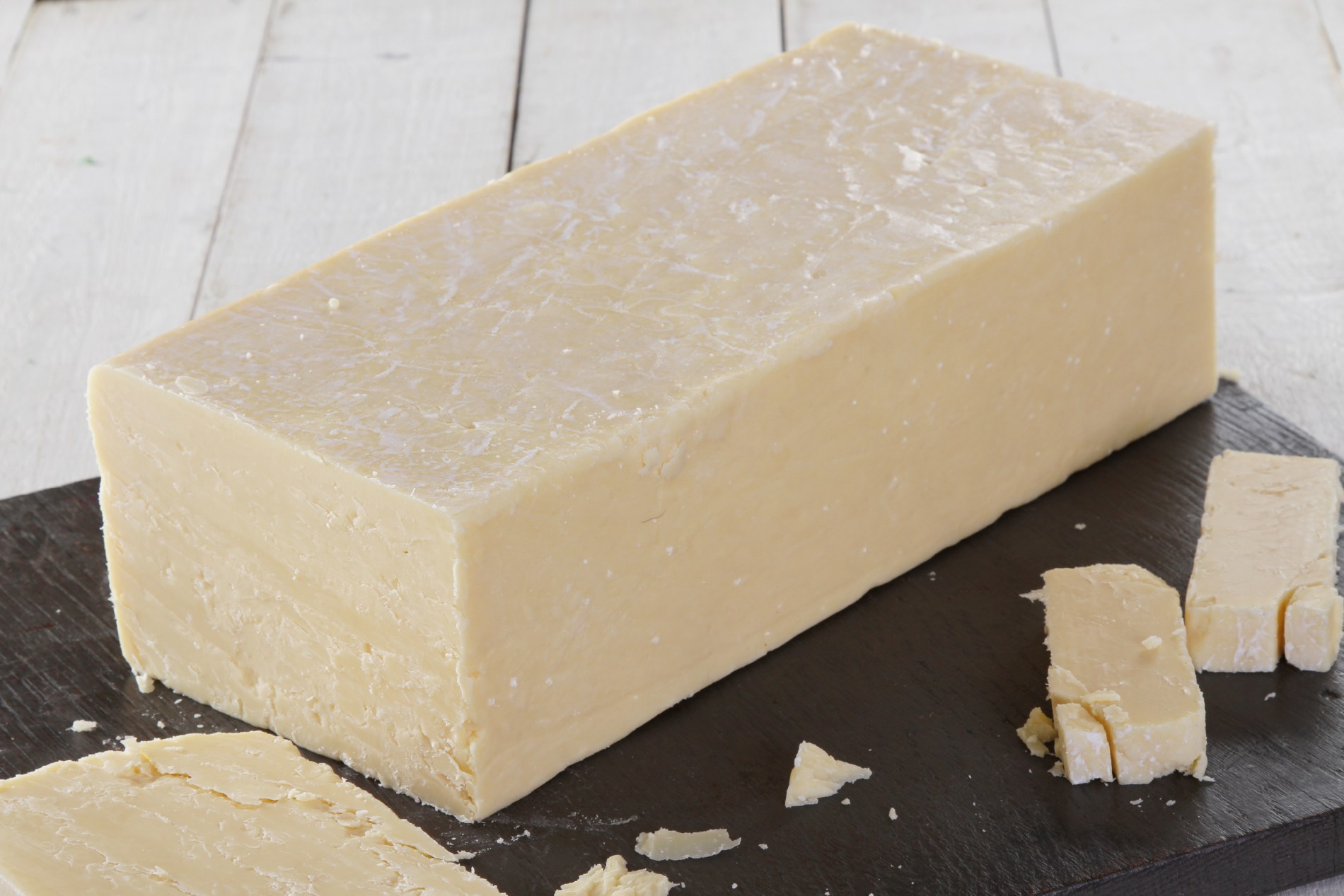

Articles
How To Store Fresh Parmesan Cheese
Modified: December 7, 2023
Learn the best methods for storing fresh Parmesan cheese in this informative article. Keep your cheese fresh and flavorful for longer with these tips and tricks.
(Many of the links in this article redirect to a specific reviewed product. Your purchase of these products through affiliate links helps to generate commission for Storables.com, at no extra cost. Learn more)
Introduction
Welcome to the world of fresh Parmesan cheese! Whether you’re a cheese connoisseur or just love that savory, salty taste, it’s important to know how to properly store this delectable treat. Fresh Parmesan cheese is rich in flavor and texture, making it a popular choice for a variety of dishes, from pasta to salads to gourmet sandwiches. However, without proper storage, this beloved cheese can lose its taste and spoil quickly. In this article, we will guide you through the process of storing fresh Parmesan cheese to ensure that it stays at its peak flavor for as long as possible.
Before we delve into the storage techniques, let’s define what exactly fresh Parmesan cheese is. Made from cow’s milk and aged for at least 12 months, fresh Parmesan cheese, also known as Parmigiano-Reggiano, boasts a hard and granular texture with a nutty and slightly sweet flavor. This cheese is highly versatile and can be enjoyed on its own as a snack or used as a flavorful ingredient in countless recipes.
Now that we have a basic understanding of fresh Parmesan cheese, let’s explore the optimal storage conditions to preserve its flavor and quality. The key factors to consider are temperature, moisture, and exposure to air. By controlling these variables, you can extend the shelf life of your cheese and ensure it remains at its best.
Key Takeaways:
- Proper storage of fresh Parmesan cheese involves maintaining cool temperatures, controlling moisture, and minimizing air exposure. By following these guidelines, you can preserve the cheese’s flavor and texture for an extended period.
- When storing fresh Parmesan cheese, choose airtight containers, refrigerate at the right temperature, and consider freezing for long-term storage. These steps help maximize the cheese’s shelf life and ensure its deliciousness for future culinary adventures.
Read more: How To Store Parmesan Cheese
Understanding Fresh Parmesan Cheese
Before we dive into the specifics of storing fresh Parmesan cheese, it’s beneficial to have a deeper understanding of this delicious cheese. As mentioned earlier, fresh Parmesan cheese, also known as Parmigiano-Reggiano, is made from the milk of cows that graze on the fields of Italy’s Emilia-Romagna region. It undergoes a meticulous aging process that lasts for a minimum of 12 months and can go up to 36 months or longer.
The aging process is what gives Parmesan cheese its distinct flavor and texture. As the cheese ages, it develops a hard and granular texture, making it easy to grate or shave onto dishes. The flavor of fresh Parmesan cheese intensifies with time, developing a nutty and slightly sweet taste that adds depth to any recipe it is used in.
One remarkable aspect of fresh Parmesan cheese is its versatility. It can be used in a multitude of dishes, whether it’s sprinkled over pasta, melted on top of a pizza, or grated onto a salad. Its unique flavor profile makes it a staple in Italian cuisine and a favorite among food enthusiasts around the world.
When purchasing fresh Parmesan cheese, it’s important to look for cheese that is aged for at least 12 months, as this ensures that it has reached its optimum flavor and texture. Avoid pre-packaged grated or shredded Parmesan cheese, as these varieties often contain additives like cellulose powder to prevent clumping, which can affect the taste and quality of the cheese.
Now that we have a solid understanding of fresh Parmesan cheese, let’s move on to the key factors that contribute to its longevity in storage: temperature, moisture, and exposure to air.
Determining the Optimal Storage Conditions
When it comes to storing fresh Parmesan cheese, creating the right environment is crucial to maintaining its flavor and texture. The optimal storage conditions for Parmesan cheese involve controlling the temperature, moisture levels, and exposure to air.
First and foremost, it’s important to store fresh Parmesan cheese at a cool temperature. Ideally, the cheese should be kept at around 40°F (4°C). This temperature range helps slow down the growth of bacteria and preserves the cheese’s quality. Refrigeration is the best method for achieving this temperature, as it provides a consistently cool environment. However, make sure to avoid storing the cheese in the coldest part of the refrigerator, such as the back of the lower shelves, as it can freeze or become too cold, affecting the texture and taste of the cheese.
In addition to temperature, moisture is another critical factor to consider. Parmesan cheese is sensitive to moisture, as it can cause the cheese to become moldy. Therefore, it’s essential to keep the cheese in a dry environment, away from any sources of humidity. To absorb any excess moisture, you can place a clean, dry paper towel or cheese paper in the storage container.
Avoid exposing fresh Parmesan cheese to air as much as possible. Oxygen can cause the cheese to oxidize and lose its flavor. To minimize air exposure, it’s recommended to wrap the cheese tightly in a layer of plastic wrap or aluminum foil. Alternatively, you can store the cheese in an airtight container, ensuring that it is sealed securely.
By maintaining the optimal storage conditions—keeping the cheese cool, dry, and protected from air—you can extend the shelf life of fresh Parmesan cheese and preserve its delicious flavor and texture for longer periods.
Choosing the Right Storage Container
Choosing the right storage container for fresh Parmesan cheese is essential to maintain its quality and prevent it from spoiling. The container you select should provide a suitable environment that keeps the cheese cool, dry, and protected from air and moisture.
When it comes to storing Parmesan cheese, the best option is to use airtight containers or resealable plastic bags. These containers offer the advantage of sealing out air, preventing the cheese from oxidizing and losing its flavor. Look for containers that are sturdy and have a tight-fitting lid to ensure a proper seal.
Another option to consider is using cheese paper. Cheese paper is specially designed to help regulate the moisture levels around the cheese, allowing it to breathe while still protecting it from excessive moisture and drying out. It also helps prevent the cheese from sweating, which can lead to mold growth. Wrap the cheese in cheese paper and secure it with tape or a rubber band.
Avoid storing Parmesan cheese in plastic wrap alone, as it does not provide sufficient protection against moisture. Regular wrap can also trap moisture against the cheese, promoting the growth of mold. If plastic wrap is the only option available, make sure to wrap the cheese tightly and transfer it to an airtight container.
If you have purchased a wedge or a block of fresh Parmesan cheese, it is best to keep it intact until you are ready to use it. Cut the cheese into smaller portions as needed, as exposing the entire block to air repeatedly can cause it to dry out more quickly.
Remember that the key is to minimize air exposure and maintain the ideal conditions of temperature and moisture to preserve the taste and texture of fresh Parmesan cheese. Choosing the right storage container plays a vital role in achieving this goal.
Preparing Fresh Parmesan Cheese for Storage
Before you store fresh Parmesan cheese, it’s important to prepare it properly to ensure its longevity and quality. By following a few simple steps, you can safeguard the cheese and maintain its delicious taste and texture.
First, examine the cheese for any signs of mold or spoilage. If you notice any discoloration or fuzzy spots, it’s best to discard the affected portion or the entire piece if the mold has spread. Cutting away the moldy parts is not recommended, as the spores can still be present and contaminate the rest of the cheese.
Next, if the Parmesan cheese came wrapped in plastic wrap or wax paper, it’s advisable to remove it from its original packaging. The original wrapping may not provide adequate protection against air and moisture. Instead, rewrap the cheese in fresh plastic wrap or cheese paper.
Before sealing the cheese in its new wrapping, make sure it is dry. Excess moisture can lead to the growth of mold. Pat the cheese gently with a clean, dry paper towel to remove any moisture or dampness on the surface. Allow the cheese to air dry for a few minutes before wrapping it up.
If you have purchased a large wedge or block of Parmesan cheese, consider cutting it into smaller, more manageable portions. This will minimize the surface area exposed to air every time you open the storage container. Wrap the individual portions tightly in plastic wrap or place them in separate resealable bags, ensuring a secure seal.
Labeling the wrapped portions with the date of purchase can be helpful, especially if you have multiple pieces of Parmesan cheese stored in the refrigerator or freezer. This way, you can keep track of their freshness and consume the oldest pieces first.
Now that you have prepared the fresh Parmesan cheese for storage, it’s time to explore the different storage options available to extend its shelf life and preserve its flavor.
Store fresh Parmesan cheese in the refrigerator in an airtight container or resealable plastic bag to prevent it from drying out. You can also wrap it in wax paper and then place it in a resealable bag for extra protection.
Read more: How To Store Parmesan Cheese Block
Storing Fresh Parmesan Cheese in the Fridge
When it comes to storing fresh Parmesan cheese, the refrigerator is your best friend. The cool temperatures provide an ideal environment for preserving the cheese’s flavor, texture, and quality.
To store fresh Parmesan cheese in the fridge, follow these steps:
- Wrap it properly: Ensure that the cheese is tightly wrapped in plastic wrap or cheese paper. This will help seal out air, which can cause the cheese to oxidize and lose its flavor. Make sure there are no gaps or openings in the wrap.
- Select the right spot: Place the wrapped cheese in the refrigerator’s main compartment, away from the door. The door tends to have the most fluctuation in temperature, which can affect the cheese’s quality.
- Keep it separate: If you have other strong-smelling foods in the refrigerator, such as onions or garlic, it’s best to store the fresh Parmesan cheese separately to avoid picking up their flavors.
- Avoid overcrowding: Give the cheese some room to breathe. Avoid placing other items directly on top of the cheese, as this can compress it and alter its texture.
- Regularly check for spoilage: Keep an eye on the cheese for any signs of mold or spoilage. If you notice any discoloration or foul odor, it’s best to discard the cheese.
Typically, fresh Parmesan cheese can remain in the refrigerator for up to 2 to 3 weeks. However, keep in mind that the cheese may lose some of its moisture and become drier over time. To prevent excessive drying, you can place a clean, dry paper towel or cheese paper in the storage container to absorb excess moisture.
Remember to always consult the expiration or best-before date on the packaging of the cheese. This will give you a general guideline on how long you can safely store the cheese before it starts to deteriorate in quality.
Now that you know how to properly store fresh Parmesan cheese in the fridge, let’s explore how to freeze it for even longer-term storage.
Freezing Fresh Parmesan Cheese
If you have a surplus of fresh Parmesan cheese or want to store it for an extended period, freezing is a great option. Freezing allows you to preserve the cheese’s flavor and texture, ensuring that it remains delicious for months.
Here’s how you can freeze fresh Parmesan cheese:
- Preparation: Cut the cheese into smaller portions or grate it, depending on your preference. Freezing grated Parmesan cheese is convenient as it allows you to portion out smaller amounts for use.
- Wrap it well: Place the cheese in airtight freezer bags or containers. If using bags, squeeze out as much air as possible before sealing. Alternatively, you can wrap the cheese tightly in plastic wrap before placing it in a resealable bag. Label the bags with the date of freezing for easy reference later.
- Storage: Place the wrapped or bagged cheese in the freezer. For optimal freshness and flavor, it’s best to use the frozen Parmesan cheese within 6 to 8 months. While it may still be safe to eat beyond that time, the quality may deteriorate.
When you’re ready to use the frozen Parmesan cheese, there’s no need to thaw it. You can add it directly to your dishes or recipes. The grated cheese will quickly melt and blend into sauces, soups, or other cooked dishes. If you have frozen a wedge or block of Parmesan cheese, you can grate it directly from the freezer and sprinkle it over your favorite dishes.
It’s important to note that freezing can affect the texture of Parmesan cheese slightly. Once thawed, the cheese may become crumbly or drier compared to its original state. However, the taste and flavor should remain intact, making it a suitable option for cooking and flavoring dishes.
Remember to only freeze Parmesan cheese once. Each time you refreeze it, the quality may further deteriorate. It’s best to portion out the cheese into smaller quantities to avoid thawing and refreezing a large batch.
Now that you know how to freeze fresh Parmesan cheese, let’s explore some tips for extending its shelf life in the fridge or freezer.
Tips for Extending the Shelf Life of Fresh Parmesan Cheese
To make the most of your fresh Parmesan cheese and ensure it stays delicious for as long as possible, here are some tips to extend its shelf life:
- Wrap it tightly: When storing Parmesan cheese, always wrap it tightly in plastic wrap, aluminum foil, or cheese paper to prevent exposure to air. This helps maintain its flavor and keeps it from drying out.
- Store it properly: Place the wrapped cheese in the coolest part of the refrigerator, typically in the main compartment. Avoid the door, as the temperature fluctuates more there.
- Keep it dry: Moisture is the enemy of cheese. Make sure the cheese is dry before wrapping it for storage. If necessary, pat it dry with a paper towel or allow it to air dry for a few minutes.
- Use a separate compartment: If your refrigerator has a dedicated cheese or deli drawer, store the Parmesan cheese there. These compartments are designed to maintain an optimal environment for preserving freshness.
- Keep strong odors away: Parmesan cheese easily absorbs odors from the surrounding environment. Store it away from strong-smelling foods to prevent flavor contamination.
- Frequently check for spoilage: Regularly inspect the cheese for any signs of mold, off-color, or unpleasant odor. If you notice any, discard the affected portion immediately to prevent the mold from spreading.
- Grate as needed: Instead of grating an entire block of Parmesan cheese at once, consider grating it as needed. This reduces the exposure to air and helps maintain the cheese’s freshness and quality.
- Refrigerate leftovers promptly: If you have leftover Parmesan cheese from a meal, refrigerate it promptly to keep it fresh. Wrap it securely in plastic wrap or place it in an airtight container.
- Label and date: If you have multiple pieces or portions of Parmesan cheese in the fridge or freezer, label and date each one. This helps you keep track of their freshness and ensures you use the oldest pieces first.
By following these tips, you can maximize the shelf life of your fresh Parmesan cheese and prevent it from spoiling prematurely. Whether you’re using it as a garnish or a key ingredient in your favorite recipes, you’ll always have delicious Parmesan cheese on hand.
Now that you’re armed with all the knowledge on storing fresh Parmesan cheese, you can confidently enjoy this delectable treat while preserving its flavor and quality for an extended period.
Conclusion
Fresh Parmesan cheese is a culinary delight known for its rich flavor, granular texture, and versatility. By understanding how to properly store this cheese, you can ensure that it maintains its exceptional taste and quality for as long as possible.
Throughout this article, we’ve explored the essentials of storing fresh Parmesan cheese. From the optimal storage conditions to choosing the right container and preparing the cheese for storage, each step plays a crucial role in preserving its flavor and texture.
By keeping the cheese cool, dry, and protected from air, you can extend its shelf life in the refrigerator. Proper wrapping techniques, selecting the appropriate storage container, and regularly checking for signs of spoilage are key factors in maintaining its freshness.
For long-term storage, freezing fresh Parmesan cheese is a viable option. By following the recommended preparation and packaging methods, you can safely freeze the cheese and use it in various dishes even months later.
Lastly, we shared some tips to further extend the shelf life of fresh Parmesan cheese. From wrapping it tightly and storing it properly to keeping it away from strong-smelling foods and grating only what you need, these tips ensure that your Parmesan cheese remains at its best.
Now armed with this knowledge, you can confidently enjoy the exquisite taste of fresh Parmesan cheese in your culinary creations. So go ahead, savor the flavors, and embrace the art of storing fresh Parmesan cheese!
Frequently Asked Questions about How To Store Fresh Parmesan Cheese
Was this page helpful?
At Storables.com, we guarantee accurate and reliable information. Our content, validated by Expert Board Contributors, is crafted following stringent Editorial Policies. We're committed to providing you with well-researched, expert-backed insights for all your informational needs.















0 thoughts on “How To Store Fresh Parmesan Cheese”